Classroom Teacher
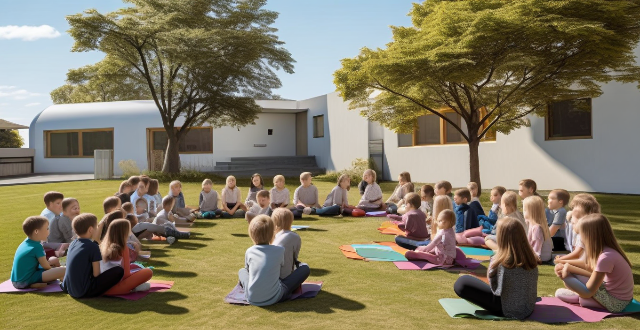
How can teacher training address cultural diversity in the classroom ?
In today's globalized world, cultural diversity is an increasingly important aspect of modern classrooms. Teacher training can play a crucial role in addressing this diversity by incorporating it into curriculum design, adapting teaching methods, providing professional development opportunities, and implementing fair assessment practices. By doing so, teachers can create inclusive classrooms where all students feel valued and supported, promoting equity and enhancing learning outcomes.
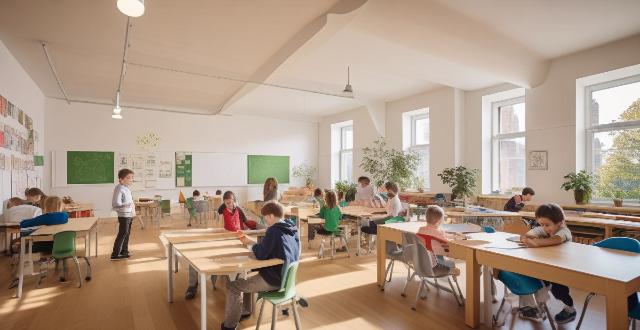
What are the benefits of using flipped classroom models as an innovative teaching strategy ?
The flipped classroom model is an innovative teaching strategy that reverses the traditional learning environment by delivering instructional content outside the classroom and using class time for interactive learning activities. This approach offers several benefits, including enhanced student engagement, improved student performance, optimized classroom time, increased teacher efficiency, promotion of lifelong learning skills, cultivation of a collaborative environment, support for differentiated instruction, encouragement of parental involvement, and flexibility for teacher innovation. Overall, the flipped classroom model empowers both students and teachers to make the most out of their educational experience by leveraging technology, fostering engagement, and promoting a culture of collaboration and lifelong learning.

What are the benefits of parent-teacher collaboration in education ?
The article discusses the importance of parent-teacher collaboration in education. It mentions that such collaboration can lead to improved student performance, increased student motivation, enhanced parental involvement, improved classroom management, and greater access to resources. Overall, it emphasizes the significance of parents and teachers working together to create a supportive learning environment for students.
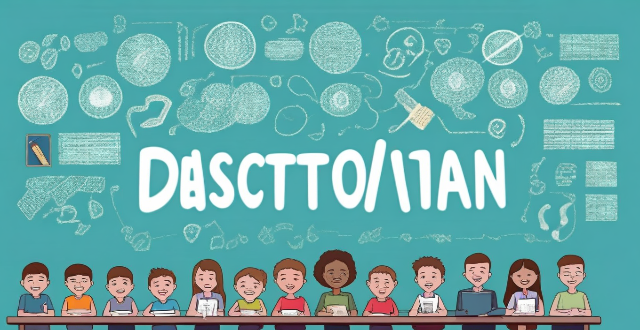
How can parents and teachers work together to address behavioral issues in the classroom ?
This text discusses the importance of collaboration between parents and teachers in addressing behavioral issues in the classroom. It emphasizes the impact of behavior on a student's academic performance, social interactions, and overall well-being, and suggests strategies for effective communication, positive reinforcement, clear expectations, differentiated interventions, and home-school collaboration. The roles and responsibilities of teachers, parents, and students are also outlined, along with challenges and solutions to overcome communication barriers, deal with resistant parties, and address complex behavioral issues. Case studies and examples are provided to illustrate successful interventions and common pitfalls, emphasizing the importance of continuous evaluation and improvement. The conclusion recaps key points and calls for active participation and ongoing support from both parents and teachers to effectively address behavioral issues in the classroom.

How can educational psychology help in classroom management ?
Educational psychology helps in classroom management by providing insights into student behavior, motivation, learning styles, and emotional needs. By understanding these factors, teachers can create effective strategies for managing challenging behaviors, promoting student motivation, tailoring teaching styles to different learning styles, enhancing student-teacher relationships, and addressing emotional needs. This leads to a positive and effective learning environment for all students.

How can data analytics be used to measure teacher effectiveness and performance ?
Data analytics can be a powerful tool for measuring teacher effectiveness and performance. It allows administrators, educators, and policymakers to gain insights into various aspects of teaching and learning, leading to more informed decision-making and improvements in educational outcomes. Here's how data analytics can be leveraged to assess teacher performance: 1. Identifying Key Performance Indicators (KPIs): To begin with, it is essential to identify the key performance indicators that will be used to measure teacher effectiveness. These KPIs may include student achievement scores on standardized tests, classroom observations and evaluations, student engagement and participation levels, parent and student feedback surveys, and teacher attendance and professional development activities. 2. Collecting and Analyzing Data: Once the KPIs are established, data needs to be collected from various sources, such as student records, observation reports, and survey responses. This data should then be analyzed using statistical methods and data visualization techniques to identify patterns, trends, and correlations. 3. Interpreting Results and Making Informed Decisions: After analyzing the data, it is crucial to interpret the results and make informed decisions based on the findings. This process involves considering contextual factors, such as school resources, student demographics, and external influences, when evaluating teacher performance. 4. Continuous Monitoring and Feedback Loop: Finally, it is essential to establish a continuous monitoring system and feedback loop to ensure ongoing improvement in teacher effectiveness. This involves regularly collecting and analyzing data, providing constructive feedback to teachers, and implementing changes based on the insights gained from the data.

How can artificial intelligence be integrated into classroom teaching ?
Artificial intelligence (AI) can revolutionize classroom teaching by enhancing student engagement, personalizing learning experiences, and improving educational outcomes. Adaptive learning systems create personalized learning pathways and provide real-time feedback, while intelligent tutoring systems offer individualized coaching and progress tracking. Automated grading and assessment streamline the evaluation process, virtual learning assistants provide round-the-clock support, and data analytics tools inform instructional decisions. AI-powered group projects and peer feedback mechanisms facilitate collaborative learning environments. Integrating AI into classroom teaching has the potential to transform education by creating more engaging, personalized, and efficient learning experiences for all students.
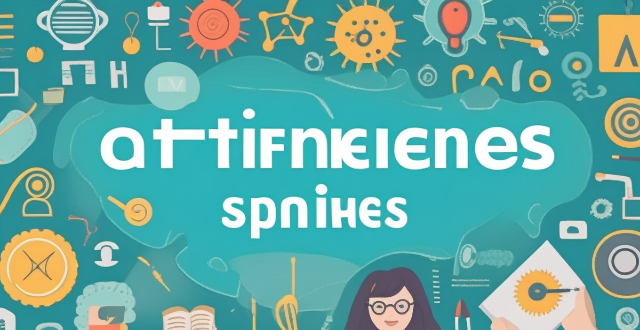
How do international teacher training standards compare across different countries ?
This text is about the differences in teacher training standards across countries. It explains that while there are some common elements to most teacher training programs, such as foundational education and practical experience, there are also significant differences due to factors like cultural influences and funding. The text then goes on to describe these differences in more detail.
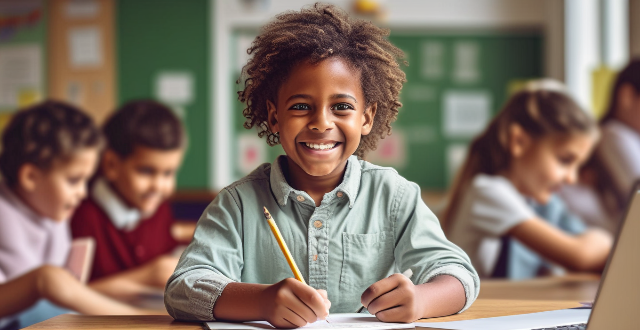
How can teacher training be tailored to support early career teachers versus more experienced educators ?
Teacher training is crucial for educators at all stages of their careers, but the needs of early career teachers differ from those of experienced educators. Early career teachers benefit from training focused on classroom management, curriculum development, instructional strategies, professional development, and mentorship programs. Experienced educators may seek training in advanced instructional methods, leadership development, technology integration, professional growth opportunities, and mentorship opportunities. Tailoring teacher training to meet the unique needs of both groups can be achieved through a variety of programs such as orientation workshops, coaching sessions, collaborative learning groups, online courses, advanced workshops, research collaborations, professional development retreats, and online learning communities. By providing tailored support, teacher training empowers educators to achieve excellence in teaching and positively impact student learning outcomes.

What is the impact of ongoing professional development on teacher performance and student outcomes ?
The text discusses the importance of ongoing professional development (PD) for teachers in enhancing their performance and improving student outcomes. It outlines five main areas where PD has a significant impact: 1. **Enhanced Teacher Knowledge and Skills**: PD programs strengthen teachers' subject matter expertise and pedagogical approaches, leading to more informed teaching practices. 2. **Improved Teaching Practices**: PD sessions cover effective classroom management techniques and assessment strategies, helping teachers create a positive learning atmosphere and accurately evaluate student progress. 3. **Increased Job Satisfaction and Motivation**: Participating in PD activities keeps teachers engaged and motivated, reducing burnout rates and increasing job satisfaction. 4. **Positive Impact on Student Outcomes**: Well-trained teachers are more effective at delivering quality instruction, which directly translates to improved academic performance among students. 5. **Adaptability to Change**: PD helps teachers stay current with technological advancements and educational reforms, ensuring they deliver relevant content to students. In conclusion, investing in ongoing professional development for teachers is crucial for educators and has a profound impact on student success.

What are the benefits and challenges of using virtual reality in teacher training ?
Virtual reality (VR) can provide an immersive and interactive environment for teacher training, allowing trainees to experience real-life scenarios and practice their teaching skills in a safe and controlled setting. This can help them develop confidence and improve their ability to handle various situations that may arise during their career. VR can simulate real-life situations such as classroom management, student behavior, and curriculum implementation. This allows trainees to practice their problem-solving skills and decision-making abilities in a risk-free environment. By experiencing these situations firsthand, they can better understand the challenges and complexities of teaching. However, there are also challenges associated with using VR in teacher training. The high cost of technology, limited availability of content, technical issues and maintenance, and health concerns are some of the main challenges. Despite these challenges, VR has the potential to revolutionize the way educators are prepared for their roles. As technology continues to advance, it will be interesting to see how VR evolves and becomes more accessible for teacher training programs.

What is educational psychology ?
Educational psychology is a subfield of psychology that focuses on the learning process and its influencing factors. It aims to understand students' learning, thinking, and development over time, as well as how teachers can support their educational needs. Key concepts include learning theories, cognitive development, motivation, classroom management, and assessment and evaluation. Applications of educational psychology include curriculum design, special education, counseling and mental health services, teacher professional development, and research. By applying its principles, educators can create effective teaching strategies, foster positive classroom environments, and improve student outcomes.

What strategies can be used to promote parent-teacher collaboration in schools ?
Promoting parent-teacher collaboration in schools is crucial for student success and well-being. Strategies include open communication, involvement opportunities, parent education, shared responsibility, technology integration, and celebrating diversity. Regular updates, volunteer programs, workshops, home-school agreements, online portals, and multicultural events are among the tactics that can foster a strong partnership between parents and teachers.
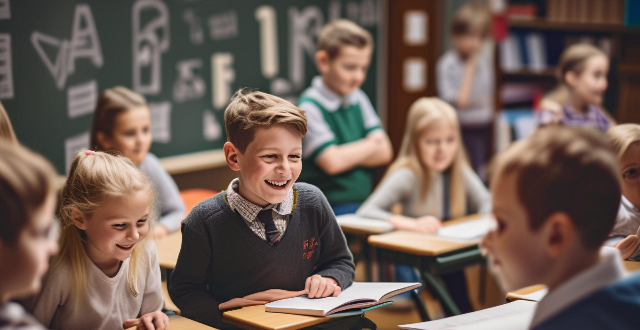
How important is student-teacher ratio in school selection ?
The student-teacher ratio is a crucial factor in school selection, impacting academic performance, personal attention, and classroom management. A lower ratio allows for individual attention, customized learning, and timely feedback, promoting better understanding and improved academic performance. It also creates opportunities for mentorship, emotional support, and social development, contributing to a positive learning environment. Effective classroom management is more feasible with a lower ratio, leading to reduced discipline issues, increased participation, and flexible teaching strategies. Prioritizing schools with favorable ratios can contribute to a successful educational journey.

How can educational psychology improve teacher-student relationships ?
Educational psychology can enhance teacher-student relationships by promoting empathy, clear communication, effective classroom management, emotional intelligence, cultural competence, personalized instruction, and collaboration. Understanding diverse student needs, active listening, consistent messaging, feedback, clear boundaries, fair discipline, self-awareness, managing emotions, inclusivity, adaptability, tailored instruction, personalized attention, parental involvement, and peer support are all strategies that contribute to a positive learning environment.
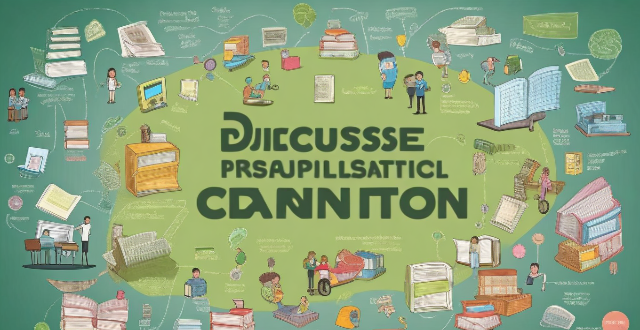
Can remote education platforms replace traditional classroom learning ?
The text discusses the pros and cons of remote education platforms and concludes that they cannot fully replace traditional classroom learning due to lack of social interaction, difficulty with self-motivation, and limited hands-on experience. However, a combination of both methods may provide a well-rounded education.
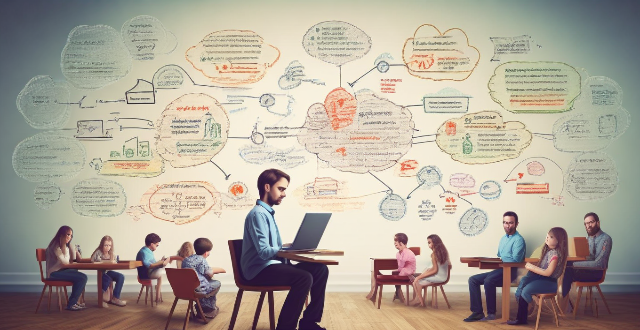
What are some benefits of using online learning resources compared to traditional classroom learning ?
Online learning resources offer advantages over traditional classroom learning, including flexibility and convenience, cost savings, personalized learning experiences, exposure to diverse cultures, and development of technology skills.

What are the key components of effective teacher training programs ?
Effective teacher training programs equip educators with skills, knowledge, and attitudes for success. Key components include educational theory, practical application, reflective practice, technology integration, cultural competency, continuous professional development, assessment and evaluation, leadership skills, legal and ethical considerations, and personalized learning approaches. These elements aim to produce well-rounded educators capable of fostering a rich learning environment for all students.
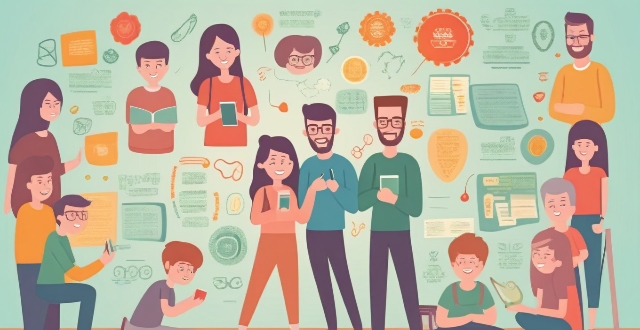
What are some common challenges that arise in parent-teacher collaboration, and how can they be overcome ?
Common challenges in parent-teacher collaboration include lack of communication, time constraints, cultural differences, resistance to change, unclear roles and responsibilities, conflicting priorities, lack of trust, inconsistent messages, limited access to information, and emotional barriers. To overcome these challenges, strategies such as improving communication, addressing time constraints, bridging cultural differences, embracing change, clarifying roles and responsibilities, building trust, facilitating access to information, and addressing emotional barriers can be implemented. By employing these strategies, parents and teachers can work together more effectively to support student success while overcoming common challenges in their collaboration.

What are some innovative approaches to incorporating physical activity into daily classroom routines ?
Incorporating physical activity into daily classroom routines is essential for student development. Brain breaks, movement stations, active learning games, outdoor experiences, and mindful moments are effective ways to promote physical health, cognitive abilities, social skills, and emotional well-being. Examples include stretching exercises, dance parties, yoga poses, math hoops, word cones, chair yoga, scavenger hunts, Jeopardy! relay races, spelling jump rope, nature walks, field trips, outdoor classrooms, breathing exercises, body scan meditations, and gratitude journaling.
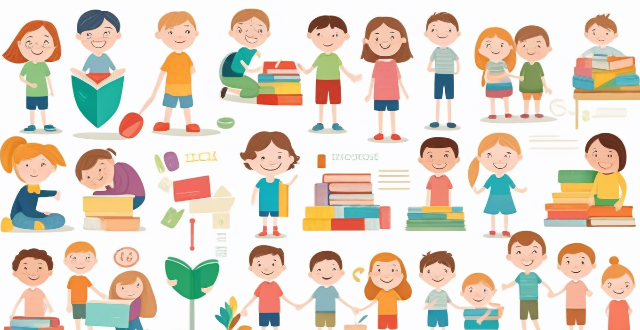
How do you create an inclusive classroom environment for students with diverse special education needs ?
Creating an inclusive classroom for students with diverse special education needs is essential. Strategies include differentiated instruction, Universal Design for Learning (UDL), collaborative learning, positive classroom culture, and professional development. These approaches ensure equal opportunities for all students to learn and thrive.

How can teacher training programs improve the recruitment and retention of high-quality educators ?
To improve the recruitment and retention of high-quality educators, teacher training programs should consider implementing comprehensive benefits packages, supportive work environment policies, professional growth opportunities, improved compensation structures, and strengthened community engagement. These measures can enhance job satisfaction, provide a sense of security, promote inclusivity and respect, motivate teachers to perform better, and foster a supportive community around schools.
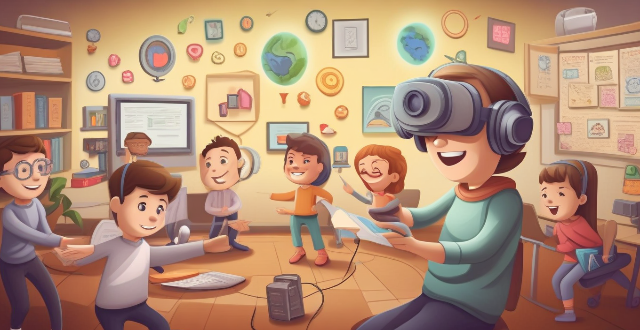
What role does technology play in modern teacher training initiatives ?
Technology plays a significant role in modern teacher training initiatives. It provides teachers with new tools and resources that can help them become more effective educators. Online learning platforms, simulation and virtual reality, data analytics, collaboration tools, digital literacy, personalized learning, access to global resources, and feedback and assessment are some ways technology is used in teacher training.

What is the importance of building a strong parent-teacher relationship in supporting student learning ?
The Importance of Building a Strong Parent-Teacher Relationship in Supporting Student Learning Building a strong parent-teacher relationship is crucial for supporting student learning. This partnership between parents and teachers can have a significant impact on a child's academic success, social development, and overall well-being. A strong parent-teacher relationship fosters open and effective communication channels, creates a supportive learning environment, promotes shared responsibility for a student's education, and cultivates positive attitudes toward education. By working together, parents and teachers can help students reach their full potential and prepare them for success in all aspects of life.

How can parents and teachers work together to promote academic achievement and success for all students ?
Parents and teachers play a crucial role in the academic success of students. By working together, they can create an environment that encourages learning, growth, and achievement. Here are some ways parents and teachers can collaborate to promote academic success: 1. Open Communication: Maintaining open and regular communication is essential. Teachers should provide updates on students' progress, challenges, and achievements. Likewise, parents should share any concerns or observations about their child's learning and behavior. 2. Supportive Home Environment: Parents should create a conducive home environment for learning by providing a quiet study space, setting a routine for homework and reading, and encouraging curiosity and exploration. 3. Partnership in Education: Both parents and teachers share the responsibility of educating students. Parents should support what teachers do in the classroom by reinforcing skills at home and ensuring that homework is completed. 4. Encourage Involvement in School Activities: Parents can volunteer at school events or participate in parent-teacher organizations. This not only helps the school but also gives parents insight into the educational process. 5. Promote a Positive Attitude Towards Learning: Celebrate effort and progress rather than just focusing on grades. This encourages a growth mindset and fosters a love for learning.

How can we ensure that climate education is accessible to all students, regardless of their socioeconomic background ?
Education about climate change is crucial for the future of our planet, and it's essential that this knowledge is accessible to all students, regardless of their socioeconomic background. Here are some ways we can ensure that: 1. Public Funding for Education: By increasing public funding for education, we can provide more resources to schools that serve low-income communities. This includes providing textbooks, technology, and other materials necessary for teaching about climate change. 2. Digital Learning Platforms: Digital learning platforms can be used to deliver climate education to students who may not have access to traditional classroom settings. These platforms can provide interactive lessons, videos, and simulations that can help students understand complex concepts related to climate change. 3. Community Outreach Programs: Community outreach programs can help bridge the gap between schools and underserved communities. These programs can offer workshops, field trips, and other activities that focus on climate change education. 4. Inclusive Curriculum Design: Curriculum design should be inclusive of all students, regardless of their socioeconomic background. This means incorporating diverse perspectives and experiences into the curriculum, as well as addressing issues related to social justice and equity. 5. Teacher Training and Support: Teachers play a critical role in delivering climate change education to students. Providing training and support to teachers can help them develop effective strategies for teaching about climate change, especially in diverse classroom settings.

Can language learning apps replace the need for a tutor or teacher ?
In recent years, language learning apps have become popular for their convenience and affordability. While they offer personalized lessons and gamified experiences, these apps cannot fully replace the role of tutors or teachers due to limitations in personal interaction, cultural context, and speaking practice. Tutors can provide customized feedback, real-life conversations, and motivation that apps lack. Therefore, a combination of both methods is recommended for a comprehensive language learning experience.
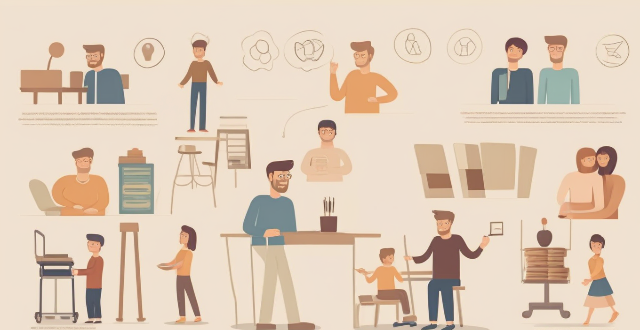
How can parents and teachers effectively collaborate to support student learning ?
Effective parent-teacher collaboration requires open communication, shared goals, consistent expectations, and supportive resources. By working together, parents and teachers can create a positive learning environment that fosters academic success and personal growth for students.
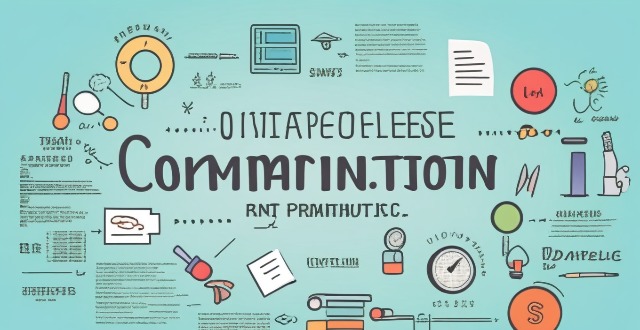
How do online teacher training courses compare to traditional in-person workshops ?
This text compares online teacher training courses with traditional in-person workshops in terms of flexibility, interactivity, cost-effectiveness, personalization, networking opportunities, practice and application, technology requirements, certification, scalability, and updates. It concludes that both have unique advantages and limitations, and the choice often depends on individual preferences and the specific goals of the training.
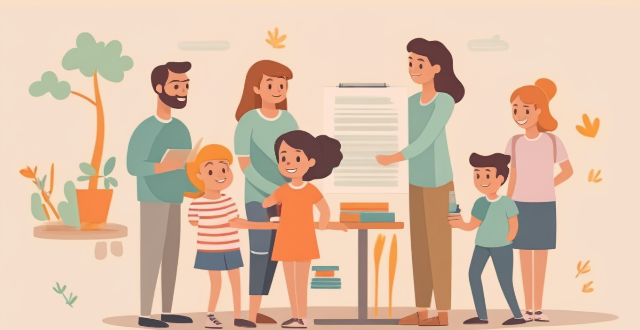
What role should parents play in their child's education, and how can they partner with teachers to achieve success ?
The article emphasizes the significant role of parents in their children's education. Parents are crucial in creating a supportive home environment, encouraging independence and responsibility, staying involved in their child's education, and partnering with teachers. By doing so, parents can help ensure their child's academic success.